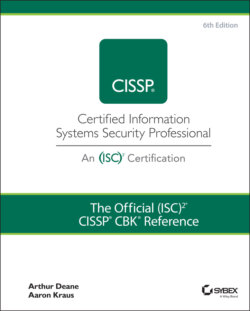Читать книгу The Official (ISC)2 CISSP CBK Reference - Leslie Fife, Aaron Kraus - Страница 71
Patents
ОглавлениеA patent is a government-issued license or grant of property rights to an inventor that prohibits another party from making, using, importing, or selling the invention for a set period of time. In the United States, patents are issued by the United States Patent and Trademark Office (USPTO) and are usually valid for 15 or 20 years. To qualify for a patent, an invention must be new, useful, and nonobvious. Patents issued by the USPTO are only valid in the United States and its territories; inventors must file patent applications in all countries where they want to be protected under national patent law. There is a European Patent Office (EPO), Eurasian Patent Organization (EAPO), and African Regional Intellectual Property Organization (ARIPO), among others. As a CISSP, you should familiarize yourself with the local IP laws in your jurisdiction.
United States patent law is codified in 35 U.S.C. and 37 C.F.R. and enforced by the U.S. legal system (not the USPTO). For international violations of a U.S. patent, a patent holder may pursue action by the U.S. International Trade Commission (ITC) instead of or in addition to the court system; the ITC can issue exclusion or cease and desist orders to restrict the infringed product from entering the United States. The most robust remedy for international infringement of a U.S. patent may only be achieved through the courts.
